How to Organize a Meeting
Learn how to organize a meeting and respect everyone's time with these 10 practical steps, ensuring each meeting drives real progress and minimizes...
Optimize meeting culture with 5 key metrics for every company. Discover strategies to reduce costs, boost engagement, and enhance productivity in every meeting.
Meetings can easily drain companies' resources, consuming valuable time and money while yielding little in return. This is where meeting metrics come in. By tracking and analyzing key metrics, organizations can gain further insights into their meeting practices, identifying inefficiencies and pinpointing areas for improvement.
These metrics offer a structured way to measure the effectiveness and impact of each meeting. From understanding the financial cost to participation and engagement, these empower leaders to optimize scheduling, streamline agendas, and make informed decisions that drive productivity. With the right metrics, companies can improve meeting culture and reduce costs.
Meeting cost estimates quantify the financial resources expended during meetings by considering factors such as participant salaries, meeting duration, and frequency. To calculate the cost of a meeting, multiply the number of participants by their average hourly rates and the meeting's length. Regularly occurring meetings increase these costs over time, making it essential to monitor and manage them effectively.
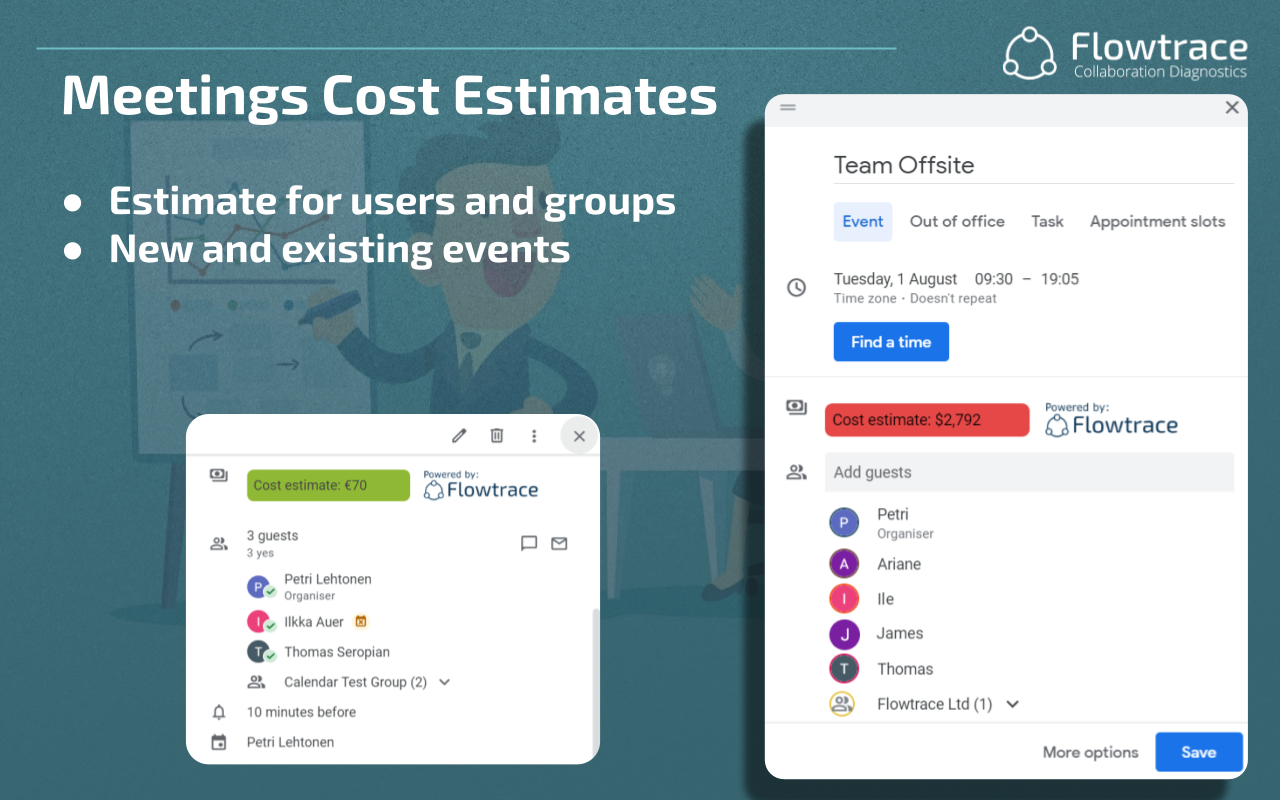
Understanding the financial impact of meetings enables organizations to assess their return on investment and identify areas where resources may be better allocated. Unproductive meetings can be a significant drain on company finances. For example, a report by the London School of Economics and Political Science found that more than one-third (35%) of business meetings are considered unproductive, with the overall annual cost to firms of unproductive meetings estimated at $259 billion in the United States and £50 billion ($64 billion USD) in the United Kingdom.
By accurately estimating meeting costs, companies can prioritize essential meetings, streamline scheduling, and implement strategies to reduce unnecessary expenditures.
To reduce meeting costs based on cost data, consider the following strategies:



By implementing these strategies, organizations can manage meeting costs more effectively, ensuring that meetings serve their intended purpose without imposing unnecessary financial burdens.
Tracking attendance patterns and participant acceptance or decline rates involves monitoring who attends meetings, who accepts or declines invitations, and the reasons behind these decisions.

This metric provides insights into engagement levels, the effectiveness of scheduling, and the perceived value of meetings among participants.
Monitoring attendance and acceptance rates is crucial for several reasons:
By analyzing these patterns, organizations can make informed decisions to improved meeting effectiveness and participant engagement.
To optimize invitations and improve engagement:
Implementing these strategies can lead to more effective meetings, higher engagement levels, and a more efficient use of organizational resources.
Tracking the average duration and frequency of meetings within an organization is crucial for understanding how meetings impact overall productivity and time management. Duration metrics reveal how long meetings typically last, while frequency measures how often they occur. Together, these metrics provide a comprehensive view of how much time is allocated to meetings and whether it is being used effectively.
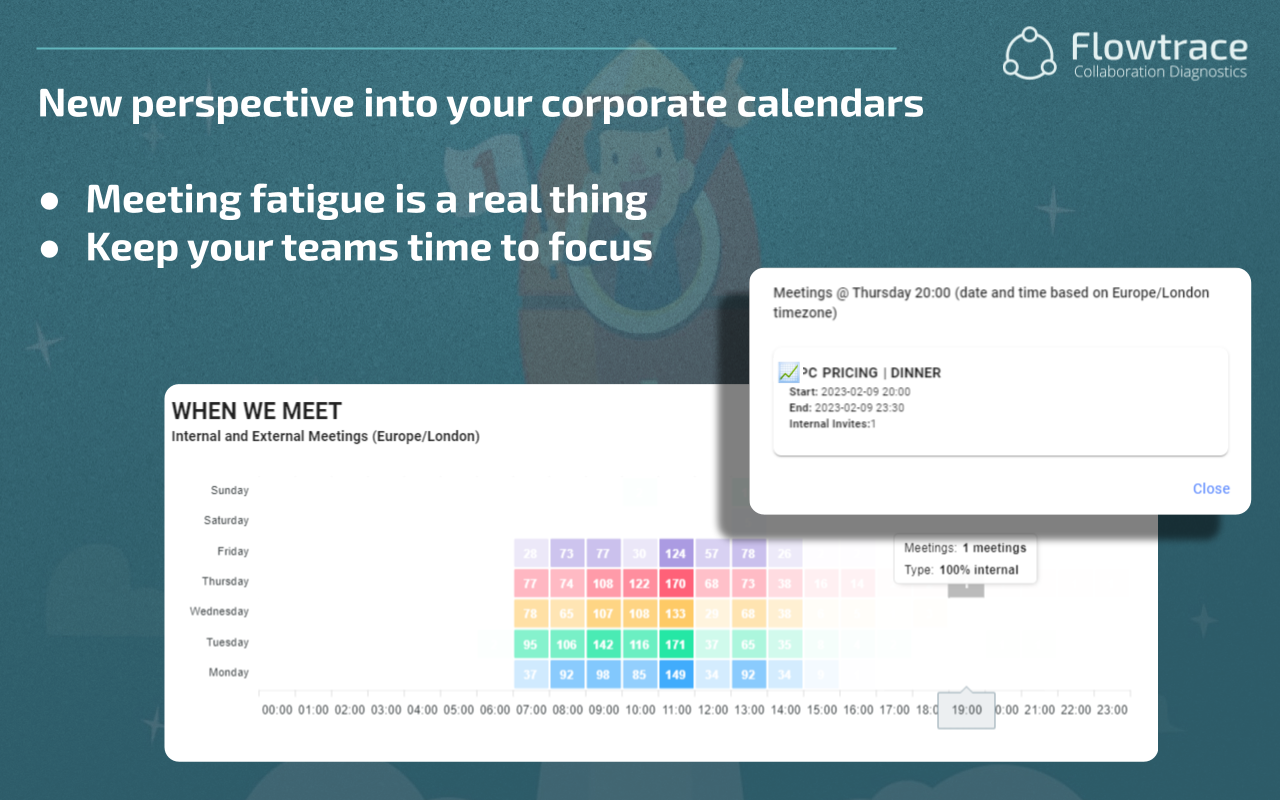
Excessive meeting durations and a high frequency of meetings can lead to several challenges:
Balancing meeting duration and frequency is key to minimizing these negative effects and ensuring that meetings serve their intended purpose without overburdening employees.
To find an optimal meeting cadence, consider the following strategies:
By tracking and optimizing meeting duration and frequency, organizations can create a more balanced work environment that values both collaborative and individual contributions.
Meeting policies refer to guidelines and protocols established to ensure meetings remain structured, purposeful, and productive. Agenda adherence, a critical component of these policies, focuses on whether meetings follow their planned structure and achieve intended goals. Together, these elements create a framework that guides discussions, reduces wasted time, and improves meeting outcomes.
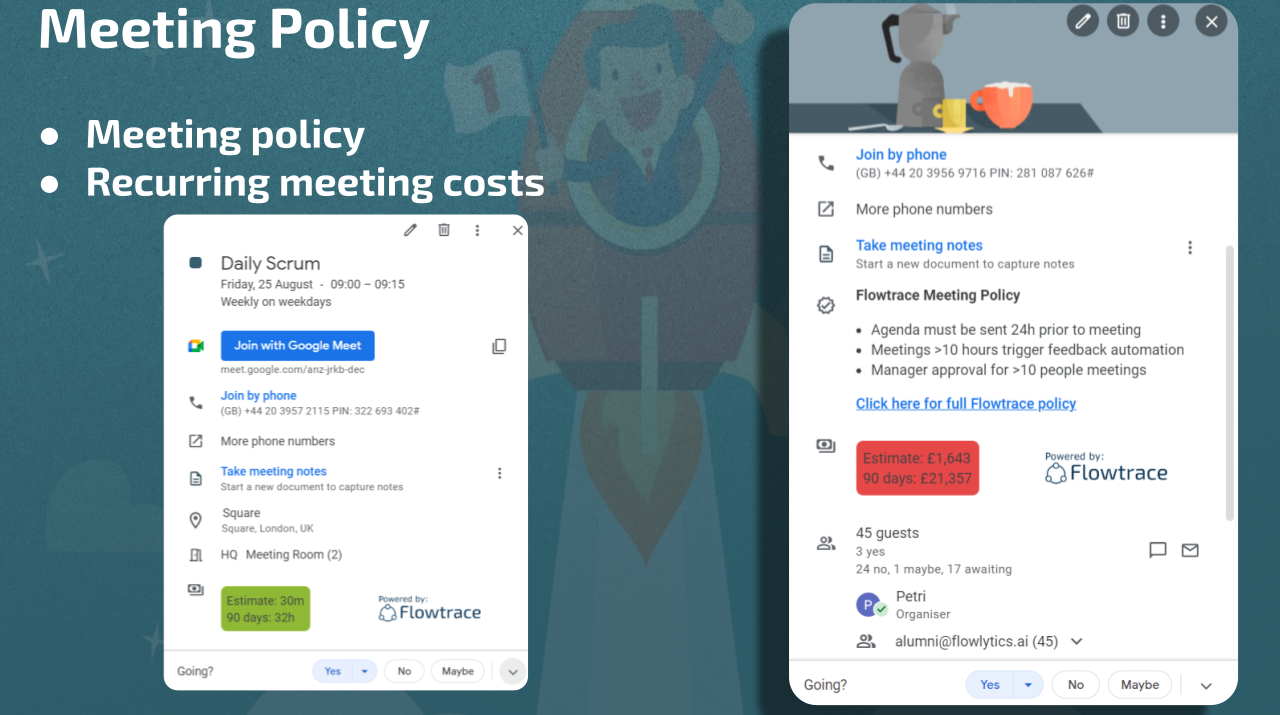
Effective meeting policies and adherence to agendas are vital for several reasons:
To enhance meeting policies and agenda adherence:
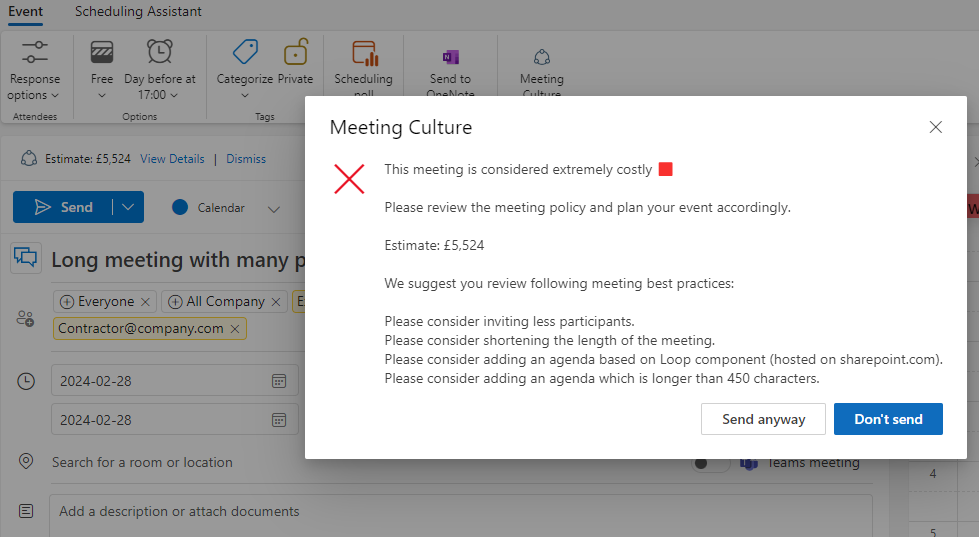

By implementing and adhering to structured meeting policies, organizations can create a culture of efficiency, respect participants’ time, and maximize the value of every meeting. Effective agenda adherence and consistent policies ensure meetings achieve their intended purpose, fostering productivity and engagement.
Tracking meeting start times, punctuality rates, and delays is a critical component of effective meeting management. This metric measures how promptly meetings begin, the consistency of attendee arrival times, and the frequency and length of any delays. By monitoring timeliness, organizations can ensure that meetings start and end as scheduled, respecting participants’ time and maximizing productivity.
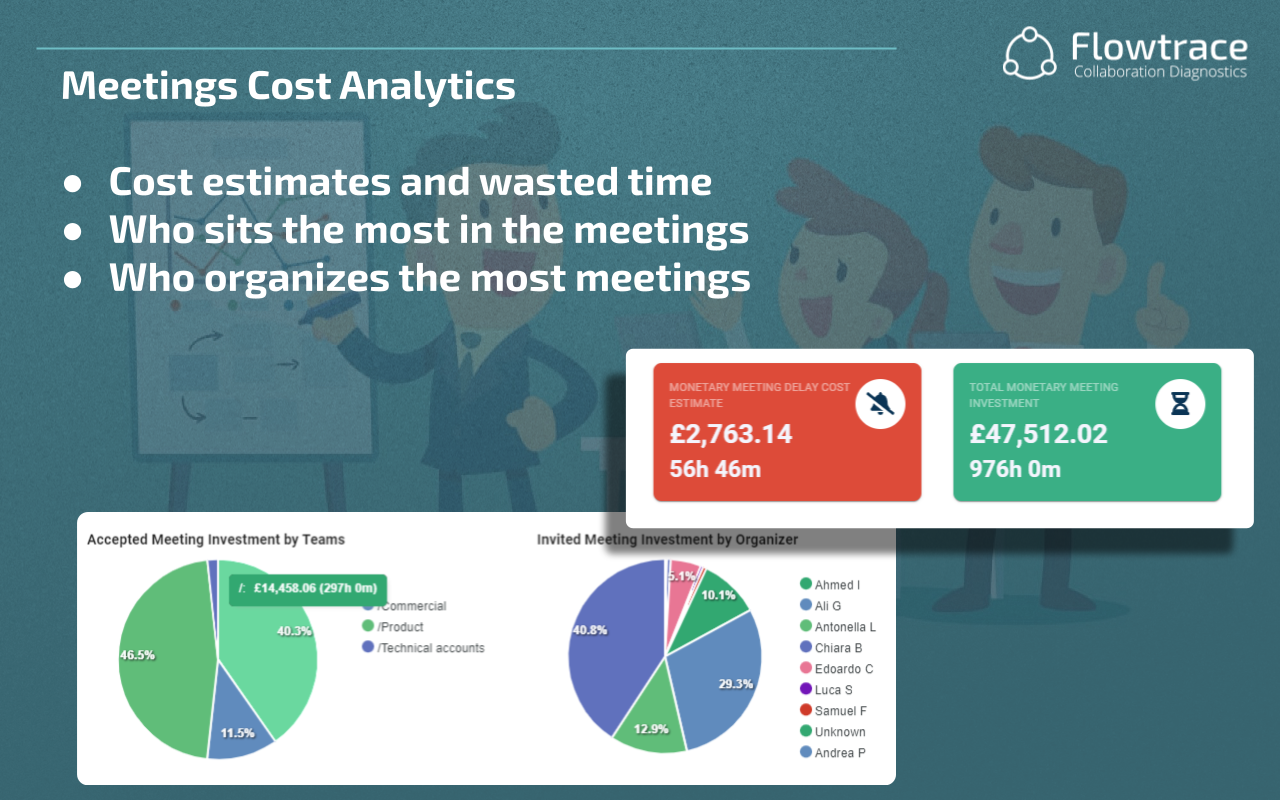
Meeting delays can have significant implications for organizations:
To promote punctuality and reduce meeting delays:
By focusing on timeliness and reducing delays, organizations can create a meeting culture of respect for participants’ time, enhance productivity, and streamline daily operations. When meetings consistently begin and end as scheduled, they become more effective tools for collaboration and decision-making.
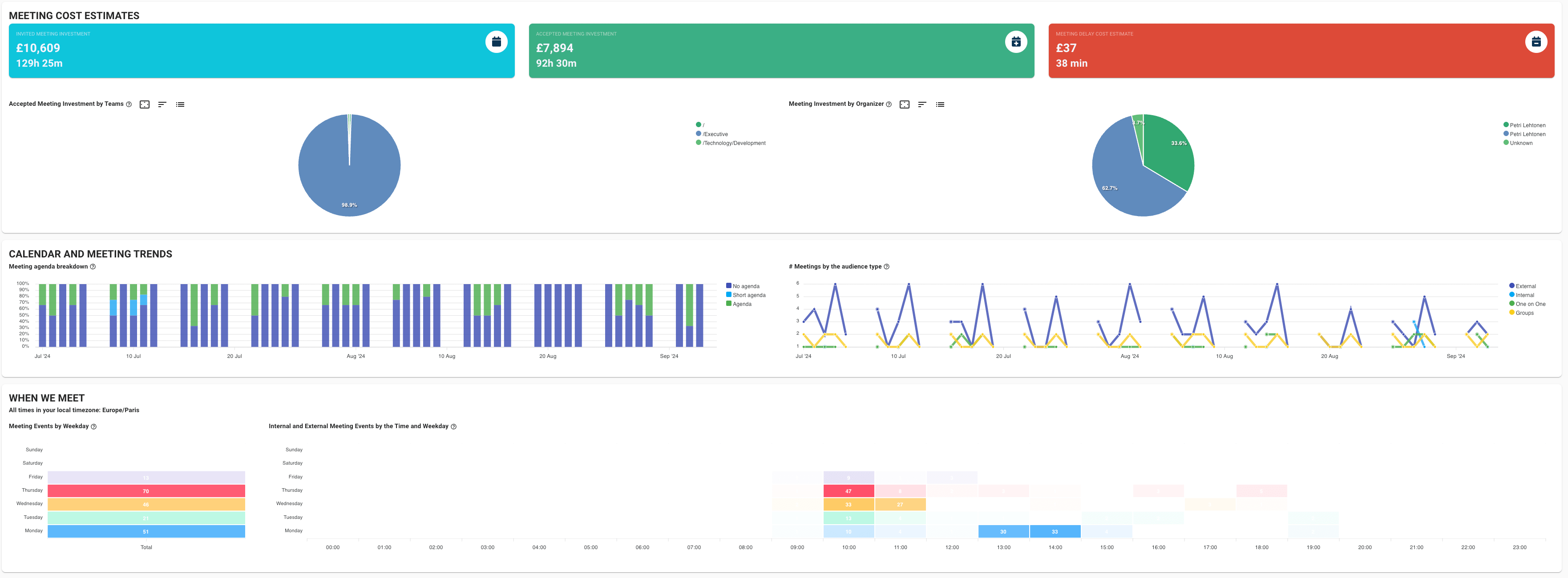
Organizations can significantly improve meeting culture by leveraging data-driven tools like Flowtrace to analyze key meeting metrics. Flowtrace empowers teams with actionable insights, making it easier to identify inefficiencies, improve engagement, and optimize overall meeting practices. By tracking metrics such as meeting costs, duration, attendance patterns, adherence to agendas, and timeliness, companies can gain a clear picture of their current practices and pinpoint areas for improvement.
Flowtrace’s data visualization and analytics capabilities transform raw meeting data into meaningful insights, allowing leaders to understand what drives effective meetings and where adjustments are needed. Whether it’s identifying recurring meetings with low value or understanding which meetings frequently run over time, data-driven insights create a foundation for informed decision-making and more efficient collaboration.
Utilizing meeting metrics through platforms like Flowtrace goes beyond data collection, it drives meaningful change within organizations:
Tracking essential meeting metrics is key to transforming meetings from potential time sinks into efficient, impactful engagements that drive organizational success. By monitoring costs, attendance patterns, agenda adherence, timeliness, and other critical data points, companies gain valuable insights into their meeting practices and can make informed adjustments that enhance productivity, streamline communication, and maximize the value of each gathering.
The adoption of data-driven practices, supported by tools like Flowtrace, empowers organizations to continually refine their approach to meetings. Discover how you can optimize your meeting culture and drive productivity today.
Learn how to organize a meeting and respect everyone's time with these 10 practical steps, ensuring each meeting drives real progress and minimizes...
Optimize your meetings with a Google Calendar Dashboard and Flowtrace integration. Gain actionable insights into time usage, meeting costs, and...
Explore cost-saving strategies for meetings, including conducting calendar audits, understanding meeting culture, implementing meeting analytics...